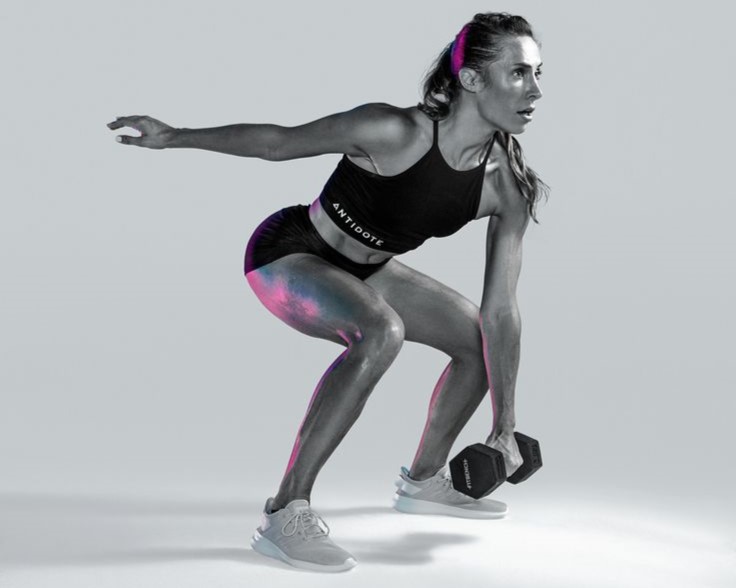Daily exercise programs to maintain physical fitness and improve overall health :
Having an effective workout program is extremely important towards achieving your fitness goals. You can’t just have a goal and expect to achieve it if you don’t have a clear and detailed plan. Without it, you’re probably wasting your time and effort. Here’s what we need to know:
There isn’t a one-plan-fits-all solution; that’s because we’re all different. So creating an exercise program varies based on your age, goal, fitness level, lifestyle, and more. Even with tons of workout videos out there, you still need to have the knowledge of knowing why you’re doing this workout rather than just blindly following it. So what I’ll be sharing with you today are the foundations to start a simple yet effective workout program. It might sound daunting, but once you know the basics and build from there, it isn’t difficult. In fact, it is a lot of fun. I’m going to try to keep it really simple and break it down into five steps.
Assess your lifestyle:
Consistency is the number one factor that will get you results. You have to train frequently across a long period of time. So let’s get it right from the beginning. This is a long-term commitment that needs discipline. There’s no shortcuts in getting the results you want, hence the first step is to assess your lifestyle and create a personalized program that will be consistent for you. Ask yourself these questions:
- How many days in a week can I dedicate to exercising?
- How long can each workout session be?
- What time of the day suits my schedule?
Grab a pen and paper and write it down. For instance, I like to work out five days in a week and have two rest days. My workout days will be Monday, Tuesday, Thursday, Friday, and Saturday. My rest days will be Wednesday and Sunday. For each session, it’ll be an hour long, and I like to get it done first thing in the morning before I start my day. Be specific and realistic because we want this to be a doable plan, not something which you’ll give yourself excuses down the road. If you can dedicate one hour every day, that’s great, but if you’re tied down to work and family commitments and can only spare 20 to 30 minutes a day, that’s absolutely fine as well. Working out for a longer period of time doesn’t necessarily equate to better or quicker results; rather, it’s about how consistent and efficient your workout is in order to achieve results. I’ve known of so many success stories from people who can only spare 20 to 30 minutes a day doing the workouts, but because they were consistent, they saw results.
Another common question I get asked often is when is the best time to workout. The simple answer is there is no such thing as the best time to workout. The best time is when it’s most convenient for you and fits your schedule. That way, you’re more likely to stick to your routine instead of having reasons not to train. So if morning is best for you, then stick to the morning. If evening works better, then keep your workout to the evening. Once you have figured out your training schedule, make a commitment to yourself and complete the training no matter what. Know that consistency is the most important thing in creating a successful program.
Workout types:
Next part to figure out is what workouts should I do? There are so many workout videos out there, but you have no idea where to start and what to do. For beginners, it’s important to know that you have to perform total body workouts focusing on all major muscles in order to burn fat and increase lean muscle mass. I’ve said this too many times, but allow me to say it once more: we cannot spot reduce fat. Typically, there are two types of training: strength training or cardio. Of course, there are also workouts which combine both, such as HIIT interval and circuit type training. These types of trainings are the most efficient way to burn fat and to tone up in a short period of time.
Let’s look at the difference between strength versus cardio. Strength training or weight lifting are exercises aimed at improving your strength and to build lean muscles. Strength training is important because the more lean muscles you have, the higher your metabolic rate will be. That means your body will be burning fat more efficiently even when you’re at rest. Here are some examples:
- Squats
- Deadlifts
- Bench press
- Lunges
- Pull-ups
Cardio or aerobics are exercises that are intense enough to increase your breathing and heart rate at a continuous and consistent pace. Cardio exercises are important to build stamina, to burn calories, and excess fat from the body. Here are some examples:
- Running
- Cycling
- Swimming
- Jump rope
- High knees
Which should you be focusing on? That really depends on your goal. If your goal is to lose weight, then you need a combination of both cardio and strength training. If your goal is to gain weight, then you need to incorporate a lot more strength training into your program and only perform cardio occasionally. So let’s say my goal is to lose weight and add more muscle tone. Based on my workout days, I’ll split it into 2 days of strength training, 2 days of HIIT conditioning workouts, and 1 day of low intensity or steady-paced cardio. For example:
- Monday: Lower body strength training
- Tuesday: Total body HIIT and conditioning workout
- Thursday: Upper body strength training
- Friday: Total body HIIT and conditioning workout
- Saturday: Barre, yoga, Pilates, brisk walking, swimming, or hiking
Go onto my channel and check out my workout playlist for different types of workouts.
Workout volume:
The third factor is to figure out your workout volume – how many reps and sets to do, how heavy to lift, and how long to rest in between exercises. These are mainly for strength training. I’ve received quite a number of questions asking if 2 kilos is enough or if 5 kilos is enough. I can’t give you a straight answer because it comes down to your own strength and goals. Let’s get to the basics of understanding sets and reps.
Sets refer to repeating the same exercise a certain number of rounds. For instance, performing 10 squats in one set, and you may want to repeat it for another two more sets with rest in between sets. For absolute beginners, I would suggest that you start with two sets and as you progress, increase to three or four sets per exercise.
Repetitions or reps refer to the number of times you perform an exercise during a set. So for instance, it can be 10 reps of squats. How many reps should you perform varies depending on your goal and fitness level. To give you a training baseline, 12 to 20 reps or more is primarily to build muscular endurance and size. Endurance means to train your muscles to perform a certain move for an extended period of time. Doing high reps means you’ll be lifting lighter loads and because we want to improve endurance, that means shorter rest between sets, 30 to 60 seconds.
6 to 12 reps is hypertrophy training. Hypertrophy is an increase in growth of muscle cells achieved through weight lifting. This training is for all of you who want to tone up and improve muscle definition. Because you’re lifting heavier with lower reps, the rest time between sets will be about 60 to 90 seconds.
Less than six reps is to build super dense muscle strength and power. Because the reps are lower, that means you’re going to be lifting a lot heavier weights, focusing all your effort into those few reps. You’ll also need longer to recover, and the rest time between sets is about 3 to 5 minutes long. Hence, depending on your training goal, you will need to adjust the weight accordingly.
For example, if you’re training for hypertrophy and you can perform up to 20 reps, then the weights are too light. You have to increase the load. You also have to adjust the weight according to the body parts you’re training. Your leg muscles are a lot bigger hence you can lift a lot heavier compared to your shoulder muscles. You can’t just stick to one weight and perform the entire body. And remember, proper form is extremely important in order for you to engage the right muscles and to avoid injuries. Every rep should be a quality rep.
Progression:
Now that you have a solid workout program and you’re consistent with it, the next important factor is progression. To keep improving and seeing results, your workouts need to get harder over time. You can’t just stick to a beginner workout which you’ve been doing for the past two months and wonder why am I not seeing results. If you fail to progress in your training, that’s when you’ll hit a plateau. Saying that, however, do not make things harder too quickly. I do understand that some of us can get really impatient and want to lift heavier within the next few sessions. It takes time to build strength and endurance. Progress slowly and gradually. This way, you will still create change but without the risk of injuries which may cause you to miss even more training days. As a rule of thumb, you want to train for four to six weeks at any given level of difficulty before adding more challenge to your training.
Training progression can be:
- Increasing the workload (that means lifting heavier weights or increasing your running speed)
- Increasing workout volume (whether it’s more reps, sets, or intervals)
- Increasing the workout time
- Reducing rest time
- Introducing tougher moves
There’s no one straight answer to how you can progress in your workout. But the longer you train and understand your body, you will start to make adjustments to your training in order to challenge yourself and to also keep things fun, fresh, and not so monotonous. That way, you will look forward to your training sessions.



